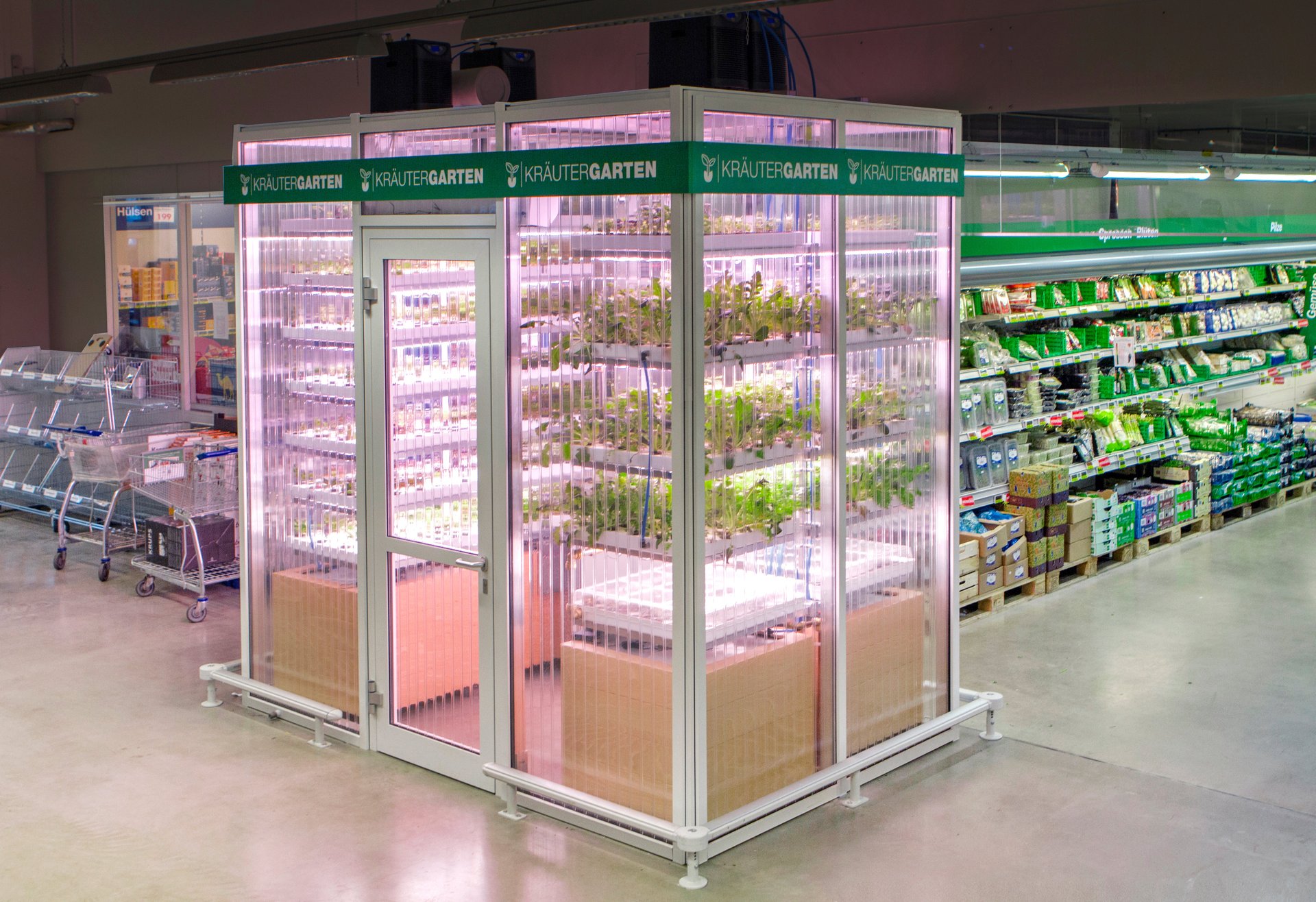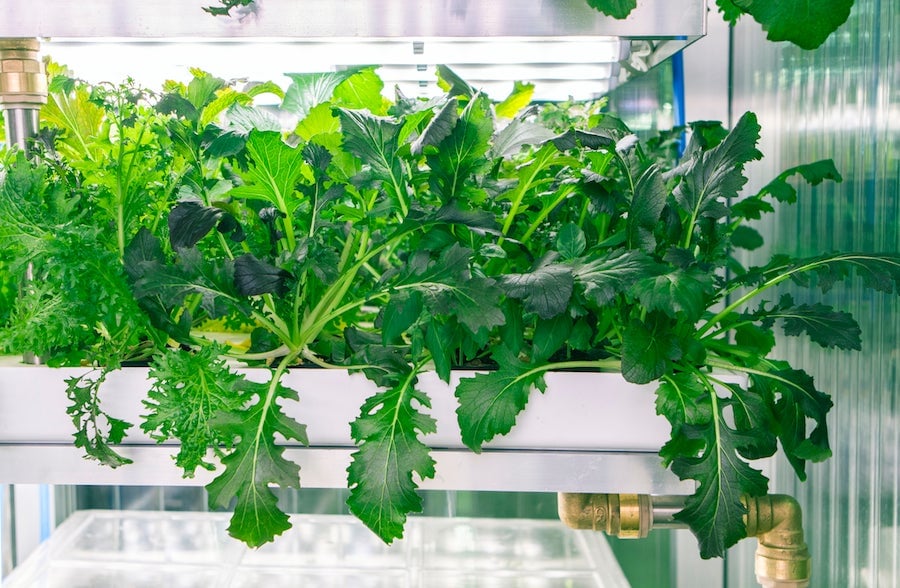A startup that wants to end world hunger is starting with a tiny indoor vertical farm
It’s not quite farm to table, but one Berlin supermarket is trying to make urban farming mainstream with a high-tech vertical garden in its produce aisle.


It’s not quite farm to table, but one Berlin supermarket is trying to make urban farming mainstream with a high-tech vertical garden in its produce aisle.
A pilot project between wholesale supermarket Metro and indoor farming startup Infarm, the Kräutergarten (‘herb garden’) uses hydroponic principles to grow plants out of nutrient-rich water. The plants are stacked vertically and housed in a protected environment, and the Infarm app monitors all aspects of the farm technology, controlling factors like pH level. Twice a week, the Infarm team harvests Greek bonsai basil and Thai basil from the 10-foot-tall (3.2 meter) garden and puts them on display for customers to buy.
Infarm also just added a Mustard Wasabina mix and mini-kale micro-greens to the Kräutergarten selection. (Harvested between the sprout and baby green stages, micro-greens contain levels of vitamins and carotenoids five times greater than their mature plant counterparts, according to a 2012 study in the Journal of Agricultural and Food Chemistry.) Infarm says the Berlin Metro has sold nearly 400 packages of Kräutergarten herbs each month since last year’s launch, and expects the pilot to be a model for other Metro stores around Europe.

Founded in 2013 by Osnat Michael and brothers Guy and Erez Galonska, Infarm has big plans: CEO Erez says the company hopes to one day power vertical farms in offices, restaurants, hotels, supermarkets, and even individual homes. “We envision a future in which cities become self-sufficient in their food production,” he says. Infarm has already designed indoor farms for clients like Airbnb, Olympus, and Mercedes Benz.
Germany is a natural home for the vertical farm pilot. The country has long accommodated garden-loving urbanites with small garden allotments, referred to as ‘schrebergarten’ after Leipzig-based Dr. Daniel Schreber, who dreamt of having fields where children could connect with nature. After Schreber’s death in 1861, the idea evolved into dedicated vegetable garden plots, which became particularly important in wartime. Schrebergarten were also known as ‘paupers’ gardens,’ as they allowed needy people to grow their own produce in lieu of receiving financial aid, the Berlin Senate Department for Urban Development and the Environment says.
A century and a half later, garden allotments are in major demand. Berlin has just 833 highly sought-after allotments for some 3.5 million residents. Acquiring one requires payment of a ‘transfer fee’ of between €2000 and €5000, and that’s only after you’ve joined the gardening association and made your way to the top of a lengthy waiting list.
While vertical farming solves a litany of traditional farming complications—it takes up less space, uses less water, doesn’t require pesticides and doesn’t suffer from soil damage caused by growing a single crop at a time—broader adoption still has hurdles. A recent study by the Johns Hopkins Center for a Livable Future cited limited access to urban gardens, as well as the high cost of urban farming programs.
Erez Galonska says Infarm is tackling those limitations, and still sees urban farming as a potential game-changer in global food production.
“One of the burning questions of our times is how to feed 9 billion people by 2050,” he says. “We always thought the answer lies in asking the right question: How can 9 billion people feed themselves? Our mission was developing a technology to precisely target this challenge.”